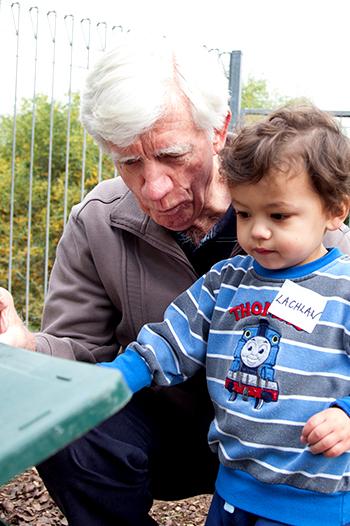Recycling
Duration/age

When recycling talk to your child about the different household things that can be recycled and how each group will be treated. For example, food scraps can be made into compost, while glass bottles can be taken to the recycling centre.
Will you set up your own recycling bins for bottles and paper and take them to the recycling centre? Or will you use the bins provided by the council? If you are using the council bins what do the different coloured lids mean?
How often does the council collect the bins compared to how often and far it is for you to travel to the recycling centre?
Is it only kitchen and food items that can be recycled or are there other household items that can be recycled as well?
Materials you will need
- Ice-cream container
- Council bins
- Garbage bags
- Large tubs
Alternative tools
- Worm farm
Skills this activity improves
Why does this matter?
Recycling helps children to identify the different attributes of an object and to group or sort each object by the attribute.
What does this lead to?
Recycling helps children to develop an understanding that there are different ways to measure and compare objects. We can compare objects by their function, such as what they are made of and whether they can be reused to make another object. When we are talking about time and how often something occurs we are noticing the patterns within everyday life and using time to measure and predict when things occur. Using measurement helps us to make decisions.
Language to use
- Full, empty, more
- Glass, plastic, organic, plant, food, paper
- This week, next week, wait, later
- Red lid, blue lid, yellow lid
Questions to use
- Can we compost all food scraps?
- Which colour bin will the bottles go in?
- How many bottles do we need to collect before we can return them?
- Are all metal tins recyclable?
- Where do the bottles go after we return them?
- What happens to the things we can’t recycle?
Useful tips
- If recycling food scraps for compost use a bucket or an ice-cream container with a lid.
- Food scraps could be placed straight into a worm farm.
- Remember to talk to your child in your home language.
More ideas
- Create a worm farm.
- Create a recycling chart to identify what goes where.
- Record your non-recyclable waste each week and see if you can reduce the amount.
Variation by age
Three to five year olds
- Create a worm farm.
- Create a recycling chart to identify what goes where.
- Record your non-recyclable waste each week and see if you can reduce the amount.
- Go to the library and borrow books about recycling.
- Create a shopping list. As you create the list explore ways to reduce non-recyclable items.
- Try to pack your lunch box so there is no plastic waste or disposable packaging.


